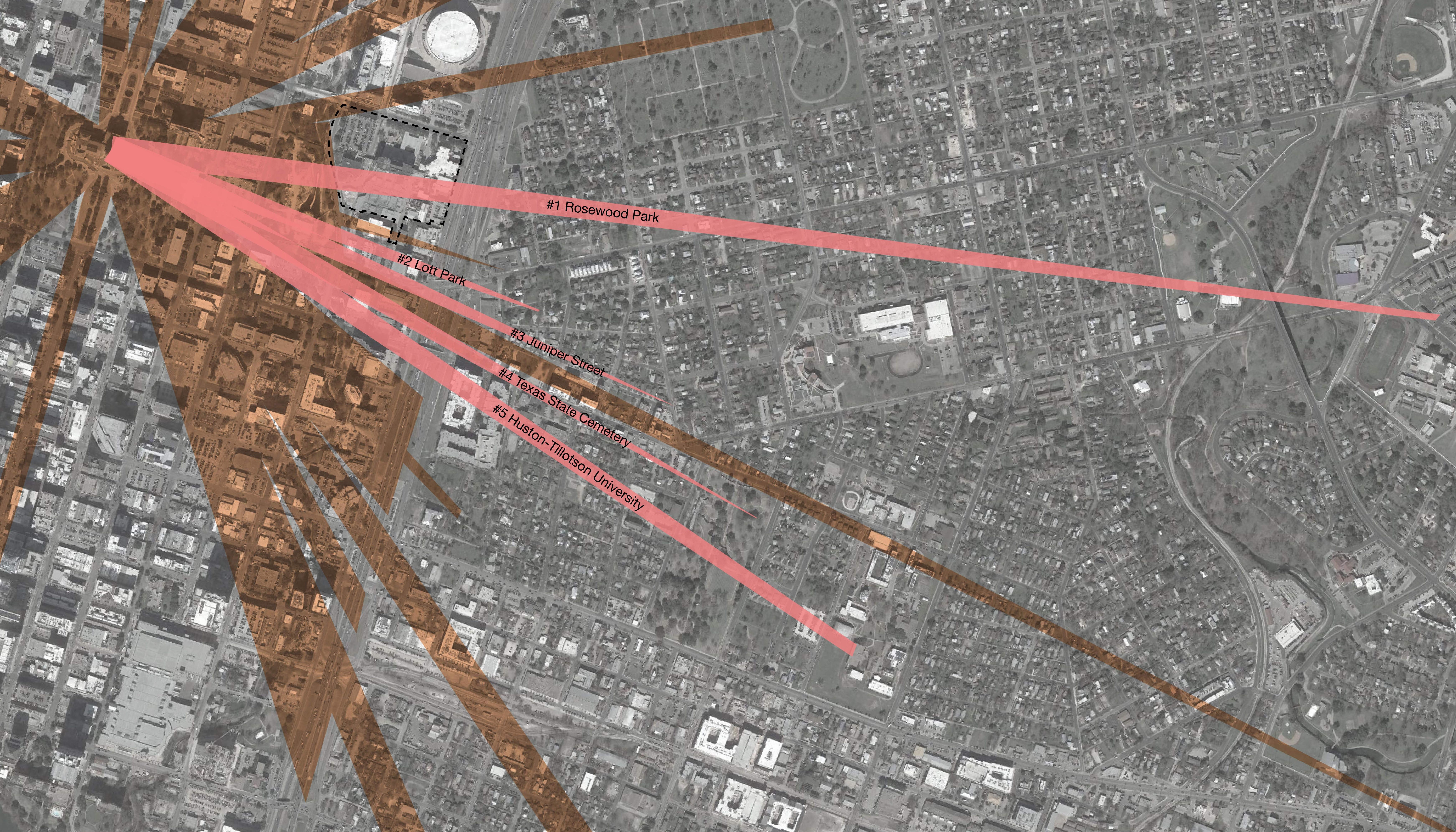Council approves resolution aimed at creating more Capitol View Corridors
Friday, February 17, 2017 by
Jack Craver City Council approved a resolution Thursday aimed at preserving “visual corridors” of the state Capitol in East Austin.
Brought forward by Council Member Ora Houston – who in a prepared statement described the view of the Capitol that she grew up enjoying as both “magical” and increasingly endangered – the resolution does not impose any immediate restrictions. Instead, it asks city staff to analyze five corridors east of I-35 and to propose one or more ways that Council could preserve them, similar to how it has preserved other visual corridors in other parts of the city.
The five corridors are referred to as the Rosewood Park Corridor, the Huston-Tillotson Corridor, the Lott Park Corridor, the Juniper Street Corridor and the Texas State Cemetery Corridor.
Houston said that protecting the view of the Capitol throughout East Austin is an issue of “equity.” The corridors she is hoping to preserve were identified in a city study more than three decades ago but were not included in the visual corridor protection ordinance that Council later approved, a decision that Houston said was “one of many examples of policies and systems steeped in the thinking of past eras.”
The measure passed after a long, meandering debate on the Council dais centered largely on concerns that the Rosewood Park Corridor might interfere with Central Health’s plans to develop its Brackenridge hospital campus.
As a result of those concerns, Council approved an amendment proposed by Council Member Pio Renteria to exclude the Rosewood Park Corridor from the resolution. However, that was only approved on the condition – proposed by Mayor Steve Adler – that Council consider revisiting the issue at its next meeting in March, after further conversations with city staff and Central Health.
Houston emphasized that the resolution was not demanding any immediate changes that would impede the health authority’s ability to build.
Juan Garza, vice president of finance and development for Central Health, said that the agency is planning to solicit requests for proposal from developers in the next few weeks and that any action that appears to be setting up major restrictions on the property might give potential contractors pause.
“It introduces a great deal of uncertainty,” he said. “We don’t know what the result will be.”
Houston argued that the more significant source of uncertainty for would-be developers of the site is the fact that the city has not yet approved the code amendment that Central Health is seeking in order to make the redevelopment possible. Indeed, Jerry Rusthoven of the Planning and Zoning Department said that staff would be submitting the proposed zoning change to a Planning Commission subcommittee in the coming weeks and that he did not expect the ordinance to get to Council until May or June.
“Who would submit a proposal not knowing what their entitlements are going to be?” Houston asked.
Garza reasoned that the agency was optimistic that it would be granted the entitlements necessary for the project because “we have been operating under assumption that our interests are aligned with the city.”
Houston initially embraced an amendment offered to her resolution by Council Member Jimmy Flannigan that, among other things, replaced language directing staff to “consider changes that would extend protections comparable to existing Capitol View Corridors” to simply “consider changes to Capitol View Corridors.” It also proposed additional language asking staff to conduct an analysis of the impact of preserving all existing corridors on the economy and local tax revenue.
Mayor Pro Tem Kathie Tovo raised concerns about Flannigan’s amendment, saying it might open the door to “eliminating existing corridors.” Houston then changed her mind about the amendment.
Interim City Manager Elaine Hart added that she believed city staff would be able to conduct an economic analysis on the five East Austin corridors by the May 18 deadline cited in the resolution, but not on many others. As a result, Council decided unanimously to withdraw Flannigan’s amendment.
Benjamin M. Hanson, chair of the Texas State Cemetery Committee, sent a letter to Council in support of the resolution, saying that it was important for the headstones of the many famous Texans who are laid to rest at the site to have an unobstructed view of the Capitol. He noted that former Lt. Gov. Bob Bullock had a 150-foot flagpole installed there so that legislators could see it from the Capitol.
Map courtesy of Elizabeth Christian Public Relations.
The Austin Monitor’s work is made possible by donations from the community. Though our reporting covers donors from time to time, we are careful to keep business and editorial efforts separate while maintaining transparency. A complete list of donors is available here, and our code of ethics is explained here.
You're a community leader
And we’re honored you look to us for serious, in-depth news. You know a strong community needs local and dedicated watchdog reporting. We’re here for you and that won’t change. Now will you take the powerful next step and support our nonprofit news organization?



